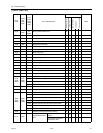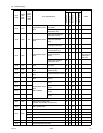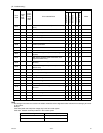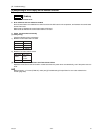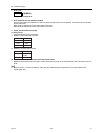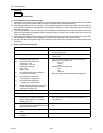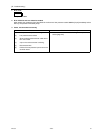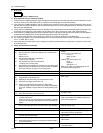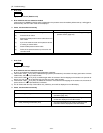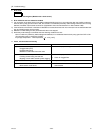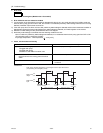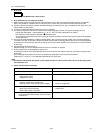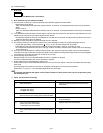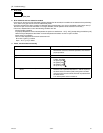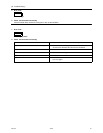
[ IX Troubleshooting ]
- 186 -
HWE0803A GB
1. Error Code
High pressure fault 1 (Outdoor unit)
2. Error definition and error detection method
1) If the pressure of 3.78MPa [548psi] or higher is detected by the pressure sensor during operation (the first detection), the out-
door stops once, turns to antirestart mode for 3 minutes, and restarts after 3 minutes automatically.
2) If the pressure of 3.78MPa [548psi] or higher is detected by the pressure sensor again (the second detection) within 30 min-
utes after the first stop of the outdoor unit, the outdoor unit stops once, turns to anti-restart mode for 3 minutes, and restarts
after 3 minutes automatically.
3) If the pressure of 3.87MPa [561psi] or higher is detected by the pressure sensor (the third detection) within 30 minutes of the
second stop of the outdoor unit, the outdoor unit will make an error stop, and the error code "1302" will be displayed.
4) If the pressure of 3.78MPa [548psi] or higher is detected more than 30 minutes after the stop of the outdoor unit, the detection
is regarded as the first detection, and the operation described in step 1 above will start.
5) For 30 minutes after the stop of the outdoor unit, preliminary errors will be displayed on the LED display.
6) The outdoor unit makes an error stop immediately when not only the pressure sensor but also the pressure switch detects
4.15
+0,-0.15
MPa [601
+0,-22
psi]
7) Open phase due to unstable power supply voltage may cause the pressure switch to malfunction or cause the units to come
to an abnormal stop.
3. Cause, check method and remedy
1302
Cause Check method and remedy
(1) Indoor unit LEV actuation failure Perform a heating operation and check the op-
eration.
Cooling: LEV on the indoor unit
LEV1,2,3
SVM1,1b,2,2b
SVA
Heating: LEV on the indoor unit
LEV3
SVM2,2b
SVB,SV4a - 4d
Refer to the page on troubleshooting for LEV
and solenoid valve.(page 279)
(2) BC controller LEV malfunction Heating only or heating main :
Indoor LEV 3
Defrost : LEV3
(3) BC controller SVM1 and 2 malfunction
->Cooling only or defrost
(4) BC controller SVA and SVC malfunction
->Cooling only or cooling main
(5) BC controller SVB malfunction ->Heating only or heating main
Solenoid valve SV malfunction(4a-4c (P72 model) ,4a-4d(P96
and P120 models)) ->Cooling only or cooling main
(6) Port address setting error. Confirm the port address of the indoor unit.
(7) Refrigerant service valve actuation failure Confirm that the refrigerant service valve is fully
(8) Short cycle on the indoor unit side Check the indoor units for problems and correct
them, if any.
(9) Clogged filter on the indoor unit
(10) Reduced air flow due to dirty fan on the indoor unit fan
(11) Dirty heat exchanger of the indoor unit
(12) Indoor fan (including fan parts) failure or motor failure
Items (7) through (12) above reduce the condensing capability
of the unit, resulting in high-pressure rise during heating oper-
ation.
(13) Short cycle on the outdoor unit Check the outdoor units for problems and cor-
rect them, if any.
(14) Dirty heat exchanger of the outdoor unit
(15) Outdoor fan (including fan parts) failure, motor failure, or fan
controller malfunction
Items (13) through (15) above reduce the condensing capabil-
ity of the unit, resulting in high-pressure rise during cooling op-
eration.
Check the fan on the outdoor unit.
Refer to the section on troubleshooting the out-
door unit fan.(page 279)
(16) Solenoid valve (SV1a) malfunction
The by-pass valve (SV1a) can not control rise in high pressure.
Refer to the section on troubleshooting the sole-
noid valve.(page 275)
(17) Thermistor failure (TH3, TH7) Check the thermistor resistor.(page 217)
(18) Pressure sensor failure Refer to the page on the troubleshooting of the
high pressure sensor. (page 273)
(19) Failure of the thermistor input circuit and pressure sensor input
circuit on the controller board
Check the sensor temperature/pressure on the
LED monitor.
(20) Thermistor mounting problem (TH3, TH7) Check the sensor temperature/pressure on the
LED monitor.
(21) Disconnected male connector on the pressure switch (63HS1)
or disconnected wire
(22) Voltage drop caused by unstable power supply voltage Check the input voltage at the power supply ter-
minal block (TB1).




